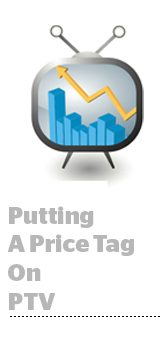 Programmatic TV will grow but remain a fraction of overall TV spend through 2017, according to eMarketer’s first forecast on the nascent space, released Tuesday.
Programmatic TV will grow but remain a fraction of overall TV spend through 2017, according to eMarketer’s first forecast on the nascent space, released Tuesday.
Spend on programmatic TV, which eMarketer defined as the automated process for buying television ads through cable, satellite or broadcast networks, is expected to more than double to $2.16 billion in 2017 and continue increasing to $4.4 billion by 2018.
Compared to programmatic video, estimated to represent 56% of all digital video ad spend at a $5.5 billion market run rate this year, programmatic TV’s impact is far less material at $710 million in spend expected this year.
But that’s due to relative immaturity.
National and local TV networks like FOX and NBC have made major strides connecting the pipes to sell linear TV programmatically, but are still conservative about automating sales for fear of cannibalizing the rest of their inventory, according to Martin Utreras, forecasting analyst for eMarketer.
For the most part, these networks focus on data-enabled targeting and segment identification rather than the RTB auctions known in digital.
EMarketer’s programmatic TV forecast follows its sizing last week of addressable TV ad spend (ads targeted toward a specific audience based on their viewing habits and demographic data), which the research firm projected to double this year to $890 million.
While this projection appears strong, eMarketer expects growth to peak next year before “dropping sharply” by about 40% in 2018 as viewer attention fragments across multiple channels.
The main reason for a projected decline in growth rate is that eMarketer’s original estimation forecasted addressable TV against a much smaller household base. And if penetration increases among DAI-enabled set-top boxes, marketers might have more precision in their campaigns (meaning they would foreseeably target a smaller, but more specific audience base).
And, eMarketer is only forecasting the addressable TV growth rate for two years (through 2018) because it “could well accelerate” as dynamic ad insertion grows, the researcher says.
The market for addressable and programmatic TV is still tough to quantify because it is so novel.
One ongoing challenge when deciphering between addressable and programmatic TV is that buyers and media companies each classify their buys differently.
Sometimes programmatic video and programmatic TV teams are one and the same. And while some agency buyers consider over-the-top buys within their “traditional” or linear TV conversations, some have dedicated “advanced TV units.”
EMarketer plans to continue breaking out addressable TV ad spend separately from programmatic – the two don’t currently overlap. Streaming video (or digital video, as eMarketer defines it) will be a separate category as well.















